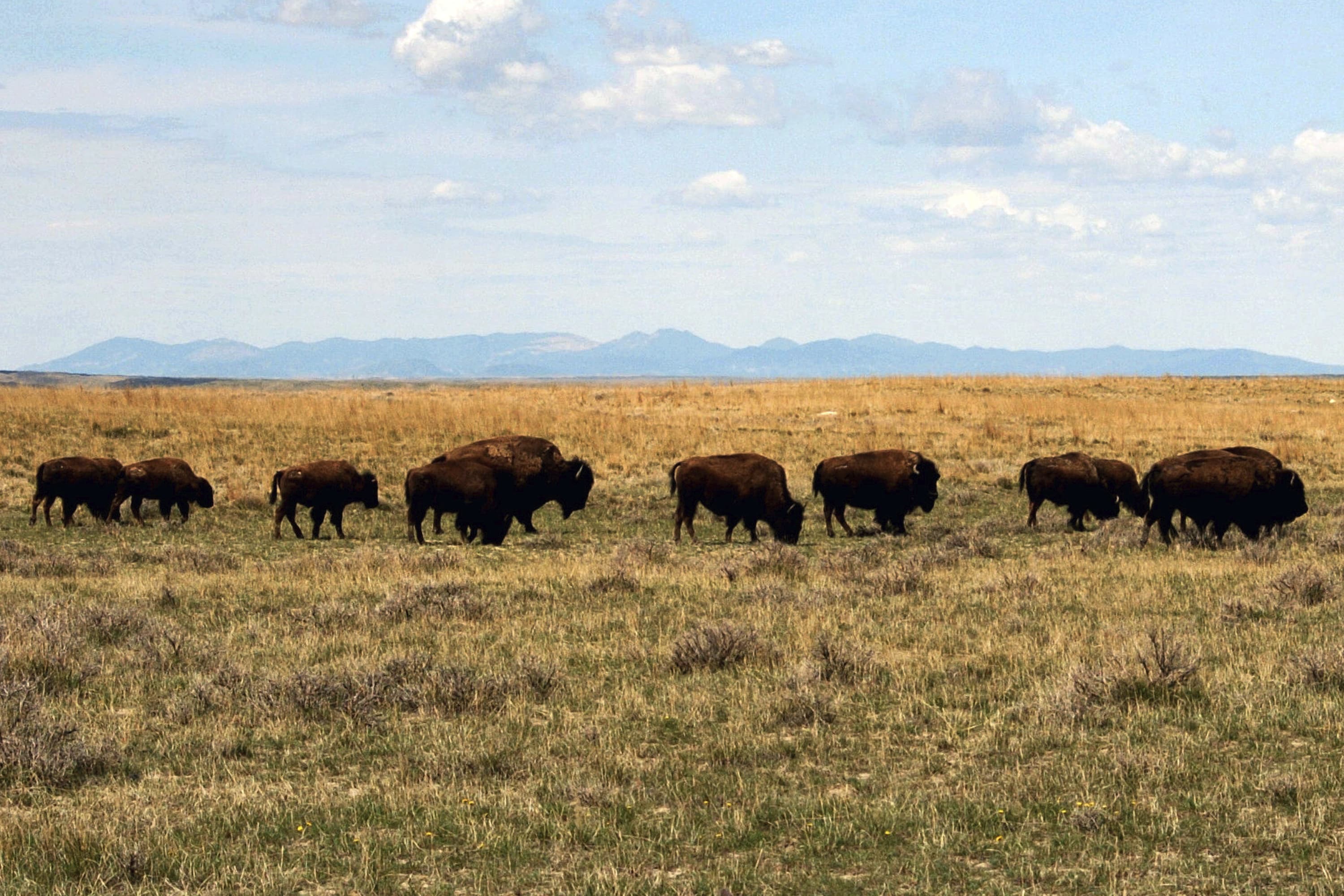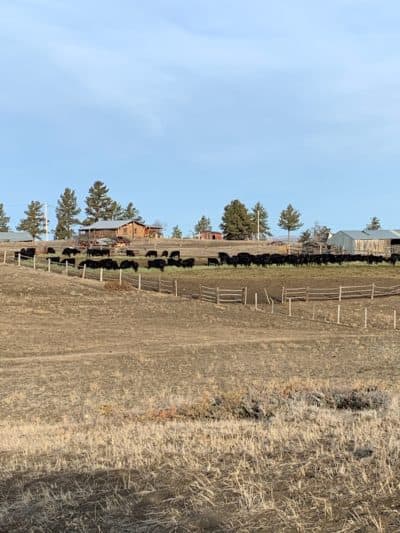Advertisement
Ranchers Push Back On American Prairie Reserve In Montana
Resume
Tensions are high over the fate of more than 3 million acres of public and private land in northeast Montana. Two groups have very different views on the future of this vast area.
Alison Fox is head of an effort to turn it into the largest nature reserve in the nation. She’s the CEO of American Prairie Reserve, known as APR, a project backed by Silicon Valley funders who have spent millions of dollars buying up private land with the intent of creating an American Serengeti.
This requires removing the livestock that have grazed the area for more than a century and replacing it with species like elk, antelope, prairie dogs, pronghorn and bison — animals that once roamed the land.
Montana’s temperate grasslands are just the place for a reserve because of its biodiversity, Fox says. Grasslands are also impeccable carbon sinks, she says, because of their ability to absorb carbon dioxide from the atmosphere.
Her goal for the APR is to restore and preserve the land’s ecosystem for years to come.
“We will ensure that the species that were once home there can make their homes again,” she says. “We have a conservation herd of bison, and that's been one of the important species restoration efforts that we've led.”
She also hopes the reserve will go beyond natural conservation and attract Montanans and people across the world to hike, birdwatch, hunt or just experience nature.
APR has partnered with Native communities in the region, such as the Fort Belknap Indian Reservation, to develop ecotourism opportunities, she says.
“Thus far, that has included a naturalist guiding training program and employment of cultural interpretive guides. It also includes employment of caterers and photographers and other small business owners from the reservation,” she says.
APR has also collaborated with local tribes on bison herd management and trading animals for genetics, she says. Any animal surplus is given to tribal herds across the Great Plains, she explains.
So far, with help from big donors, APR has purchased more than 30 private properties and needs at least 50 more to make the vision complete. Critics say the reserve will change local ranchers’ way of life.
Fox argues the outside money signals the “global significance” of APR’s mission to restore grasslands and create public access to nature. The properties APR owns now are leased to community members who graze cattle on the lands, she says, and the business side of APR buys and hires locally. She says the organization cares about the land and wants to be “a productive part of the community for decades to come.”
“There’s room for us to work together,” she adds.
But for longtime rancher and landowner Deanna Robbins, a third generation Montanan and a member of the United Property Owners of Montana, the reserve is non-negotiable.
“We don't just occupy this land, and I think that's what a lot of people don't understand,” she says. “Our life's work is growing food, and this is a hungry world.”

Robbins feels the APR's vision of an American Serengeti is an assault on her business, culture and those living and working within the bounds of the planned reserve. She’s now leading an effort called “Save the Cowboy” to halt the project.
Through water developments in the region, the area’s grasslands are perfect for cattle ranching and hunting because the grass is high in protein and minerals, she says.
“It's good for growing production livestock,” she says, “and it's been considered the highest purpose of the land for over 100 years.”
Elite donors funding APR concern her and others who oppose the project, she says. They view it as “basically a takeover of this area by just a few individuals with vast financial resources,” she says.
As cattle ranchers, there’s a lot at stake for her family and land if the reserve goes through. Her family has a calf operation where they sell calves that are grown for beef production.
Wild species such as grizzly bears, wolves and free-roaming bison, she says, would be a threat to cattle on her property. Plus, the glut of elk and deer would make stiff competition for grass and other forage.
“So once they grow those numbers of all those predators and the competition for grass, they would eventually be on our ranch, too,” she says. “So it's why we're working so hard to stop them.”
APR’s 3.5 million-acre goal will wipe out the surrounding “vibrant, healthy” communities of family ranches and the local cowboy culture, she argues.
Being a cowboy to Robbins is fostering an entrepreneurial, “independent spirit. We're very social, but we're also very independent in how we work. And I'm very proud to be part of that culture.”
Cristina Kim produced and edited this story for broadcast with Tinku Ray. Serena McMahon adapted it for the web.
This segment aired on December 14, 2020.


